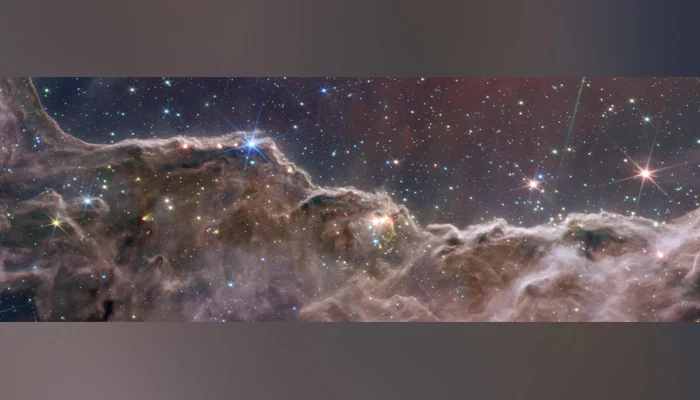The James Webb Space Telescope (JWST) continues to astound astronomers and space enthusiasts alike with its latest release—a breathtaking image of the exploded star SN1987A, reminiscent of a radiant necklace of luminous rings. This stunning display not only fuels imagination but also provides scientists with invaluable insights into the intricate life cycles and dramatic deaths of stars.
Situated in the Southern hemisphere of the sky, SN1987A holds a unique distinction as the most observed celestial object in space due to its extraordinary explosion in 1987. Positioned a mere 170,000 light-years away, this event marked the closest and brightest instance of a star’s cataclysmic explosion witnessed from Earth.

The image, unveiled on July 12, 2022, showcases a series of luminous rings that depict layers of gas and dust expelled by SN1987A during various stages of its dying process. These rings, resembling an ethereal necklace, bear witness to the star’s collapse and subsequent supernova eruption, illuminated by the expanding shockwaves that marked its final moments.
Of particular interest is a distinctive ring that appears as a “string of pearls,” comprising material ejected roughly 20,000 years prior to the star’s ultimate demise.
This remarkable revelation owes its clarity to the advanced capabilities of the James Webb Space Telescope, enabling an unprecedented level of detail in examining the luminous necklace and the delicate luminosity surrounding it. Importantly, the JWST unveiled previously unseen elements, including two “pearls” concealed from the gaze of the Hubble Space Telescope.
Dr. Roger Wesson from Cardiff University, UK, emphasized the novel insights facilitated by the JWST, affirming, “We’re able to see new hotspots emerging outside the ring that has previously been illuminated.” He further highlighted the unexpected detection of emission from molecular hydrogen within the ring, a discovery made possible by the JWST’s enhanced sensitivity and resolution.
The image also highlighted crescent-shaped patterns within the cosmic jewelry, positioned just outside the densely concentrated inner area. These intriguing crescents, resembling a keyhole, have ignited scientific curiosity, with Dr. Mikako Matsuura suggesting they may be illuminated by reverse shockwaves reverberating back towards the keyhole.
Despite the JWST’s remarkable capabilities, its view remains partially obscured when attempting to detect the remnants of the dying star. These remnants are believed to manifest as compact objects composed of neutron particles, measuring a mere few tens of kilometers across.
The evolution and characteristics of SN1987A have captivated astronomers, leading to extensive observation and study by major telescopes capable of capturing its transformations. Astronomers speculate that the star was a relatively young and sizzling blue supergiant, boasting a mass likely 20 to 30 times greater than that of our Sun.
The enigma of SN1987A continues to captivate astronomers, particularly the mystery surrounding its explosion as a blue supergiant—contradicting prevailing theories that only red supergiants could undergo such a phenomenon. Dr. Wesson aptly described this quest for understanding as “one of the great quests.”
As the JWST’s operational lifespan surpasses initial expectations, lasting potentially up to 20 years, the scientific community eagerly anticipates the telescope’s continued monitoring of SN1987A, offering a profound window into its ongoing evolution and transformations.




